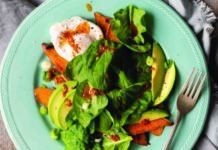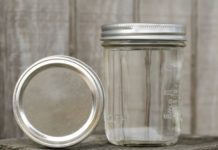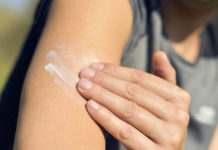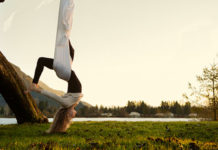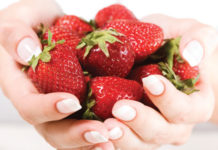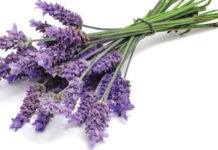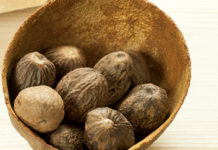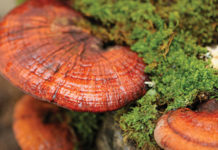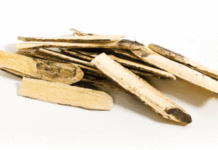
Smart summer skin care starts with avoiding sun damage. Covering up, using a suscreen with the proper SPF, and getting proper nutrition will protect your skin.
Don’t let the summer sun blind you to its risks. How you enjoy Canada’s great outdoors can have lasting health repercussions long after your tan has faded.
Rising skin cancer rates
South of our border 72 percent of Americans polled in a recent survey think tanned skin looks more attractive than non-tanned skin. And research suggests Canadians are no different. For example, a survey found that 83 percent of Albertans think tans look good.
But here’s what doesn’t look good: the sun’s ultraviolet rays are the chief cause of aging in your skin. “Common signs of premature aging of the skin related to sun exposure,” says Kevin Smith, MD, a Niagara Falls dermatologist, “are fine lines, wrinkles, uneven skin colour, brown spots, and broken blood vessels.”
It gets worse. “Eventually, precancerous areas called actinic keratoses appear on sun-damaged skin, and eventually skin cancers,” warns Dr. Smith.
Skin cancer is the most common form of cancer in Canada, and numbers are rising. “In 2011, we estimated that almost 80,000 Canadians would be diagnosed with skin cancer,” says Gillian Bromfield, director of cancer control policy at the Canadian Cancer Society. “Of those, 5,500 were melanoma—the most serious kind of skin cancer.”
“We’ve seen increases in the rates of melanoma for both men and women,” continues Bromfield. She attributes it to changes in Canadian behaviours, including what she calls “statistically significant increases” in the number of Canadians who spend time in the sun and use tanning equipment.
Thankfully, most cases of skin cancer are preventable, and nature offers options for improving the appearance of sun-damaged skin.
Avoidance is your ally
Avoiding sun damage is easier than fixing the damage later. Try to stay out of the sun when ultraviolet rays are strongest. In Canada that’s between 11 am through 4 pm, from April to September.
If you must go outside, minimize your summer UV exposure:
- Seek shade whenever possible. Consider bringing your own shade, such as an umbrella.
- Wear a pair of oversized, wraparound, UV-rated sunglasses.
- Cover up using pants, long sleeves, and a hat. While it may seem uncomfortable during a hot day, choose fabric that’s thick and tightly woven. For example, a long-sleeved denim shirt has an SPF of 1700 compared to a white cotton shirt with an SPF of only 7.
Slather the SPF
Sunscreen could be the most potent weapon in your antiaging arsenal. It’s also your first defence against skin cancer, so choose wisely.
The active ingredients in sunscreens are divided into two categories: chemical sunscreens that absorb UV light, and sunscreens that use mineral particles to scatter and reflect the UV light. Sunscreens can contain one or both of these types of ingredients.
Natural mineral sunscreens may be healthier because they’re more stable in the sunlight and less likely to penetrate the skin barrier, according to the Environmental Working Group (EWG). Additionally, mineral-based sunscreens avoid common sunscreen chemicals such as oxybenzone—found in 65 percent of non-mineral sunscreens—and 4-MBC, which the EWG warns are potential hormone disruptors.
When choosing sunscreen, know what to look for and what to avoid:
- DO choose sunscreens made with minerals such as titanium or zinc.
- DO ensure the sunscreen has a minimum SPF of 15.
- DO visit the EWG’s Skin Deep Cosmetics Database to rate your sunscreen brand. ewg.org/skindeep
- DO NOT choose a powder or spray-on sunscreen, even if it’s mineral-based. It may increase your risk of breathing in nanoparticles.
- DO NOT use sunscreen that’s more than three years old.
“Get into the habit of applying the most important skin care product first, and that is always sun protection,” says Dr. Lisa Kellett, a Toronto dermatologist. “Apply sunscreen right after cleansing in the morning. Allow for it to … be absorbed into the skin for approximately five minutes before you apply your foundation and makeup.”
Diet defence
Food is no sunscreen substitute, but what you eat may help to protect your skin. While many foods are beneficial, several specific ones play a special role.
Cocoa
A study in the Journal of Nutrition found that cocoa flavanols provide protection from UV damage.
Lycopene
“Lycopene-rich tomatoes and watermelon may offer some protection from the sun’s damaging rays,” says Jennifer Hill, RD. “Research has indicated that a diet high in lycopene decreases the skin’s sensitivity to UV light, thereby decreasing the risk of sunburn.”
Omega-3 fatty acids
This healthy fat may protect against UV damage and prevent non-melanoma skin cancer.
Vitamin C
Research shows that people who eat foods rich in this antioxidant have fewer wrinkles than those who don’t eat such foods. “Strawberries, kiwi, bell peppers, and citrus fruits can help protect the skin from damage and aging due to their very high vitamin C content,” says Hill. “Vitamin C is … involved in protecting tissue from oxidative stress—like the free radicals caused by sun exposure—and also plays an important role in collagen synthesis.”
Additional helpful foods include green tea; resveratrol, found in red wine; and quercetin, an antioxidant in apples.
Namaste, nature!
Canada is renowned for its great outdoors. Protect and rejuvenate yourself inside and out, so you can enjoy it for many more years to come.
Anti-sun rejuvenation
Forgot your sunscreen? Revitalize your skin’s appearance with natural tips that minimize the appearance of sun-related damage.
- Exfoliate every other day. Exfoliating helps skin shed damaged surface cells to brighten away hyperpigmentation. Look for gentle exfoliants made with sugar or grains such as oatmeal.
- Moisturize daily. Moisturizer plumps the skin’s surface, reducing the appearance of wrinkles and fine lines. All-natural moisturizing ingredients include shea butter, nut oils, and aloe vera.
- Double-check the ingredients. Don’t believe the hype around the latest antiaging creme. Instead, review the label to ensure it contains proven antiaging substances. Natural ingredients that research has shown may help in your battle against sun damage and premature aging include black tea, vitamin E, niacinamide, and pomegranate extract.





